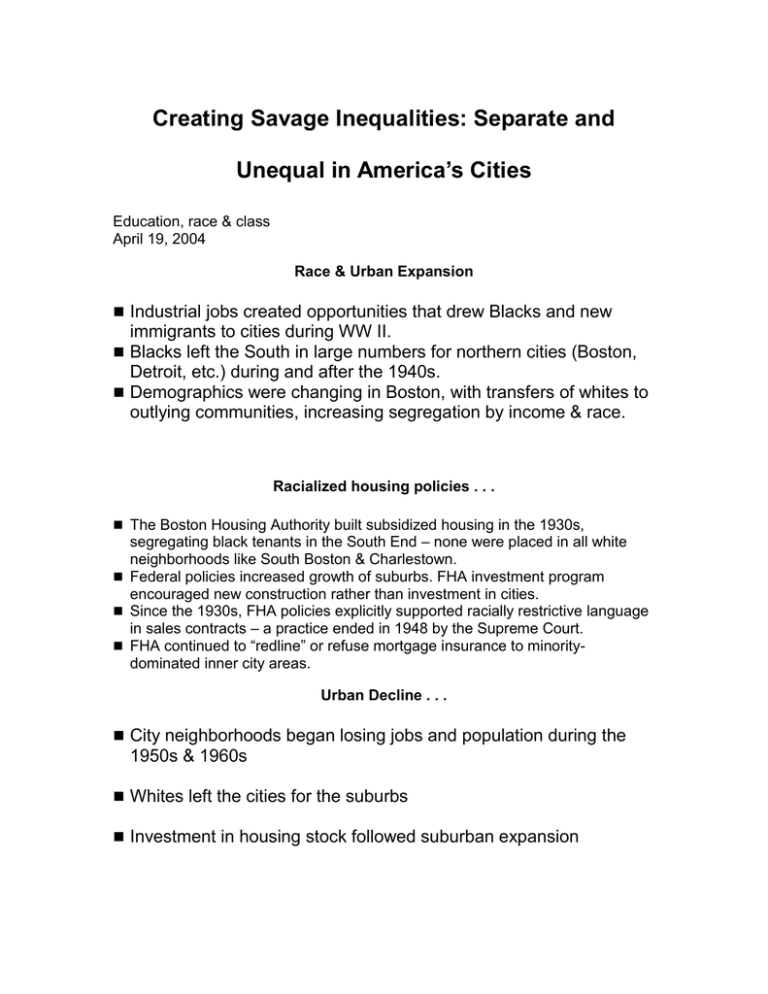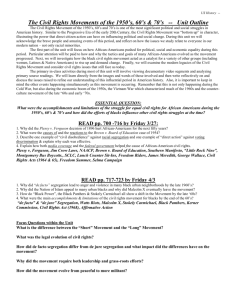Week 15 education and segregation
advertisement

Creating Savage Inequalities: Separate and Unequal in America’s Cities Education, race & class April 19, 2004 Race & Urban Expansion Industrial jobs created opportunities that drew Blacks and new immigrants to cities during WW II. Blacks left the South in large numbers for northern cities (Boston, Detroit, etc.) during and after the 1940s. Demographics were changing in Boston, with transfers of whites to outlying communities, increasing segregation by income & race. Racialized housing policies . . . The Boston Housing Authority built subsidized housing in the 1930s, segregating black tenants in the South End – none were placed in all white neighborhoods like South Boston & Charlestown. Federal policies increased growth of suburbs. FHA investment program encouraged new construction rather than investment in cities. Since the 1930s, FHA policies explicitly supported racially restrictive language in sales contracts – a practice ended in 1948 by the Supreme Court. FHA continued to “redline” or refuse mortgage insurance to minoritydominated inner city areas. Urban Decline . . . City neighborhoods began losing jobs and population during the 1950s & 1960s Whites left the cities for the suburbs Investment in housing stock followed suburban expansion Redlining & other Forms of Institutional Racism in American Cities Housing markets biased against African Americans Banks, Insurance & mortgage companies discriminated GI Mortgage program restricted where African Americans could buy homes Those African Americans who could, left the cities, leaving the poorest behind Housing Public housing projects concentrated poverty in the cities. Investment left the cities for the suburbs; tax base collapses. Slumlords rented sub-standard housing. Property owners burned their properties, leaving vacant land. Lots converted to dumps and hazardous waste sites. Impact on the family Poverty encourages teen pregnancy Few marriageable men with jobs Welfare regulations undermine families Child safety is always an issue (violence, drugs, crime) Inner city schools are substandard & racially unbalanced (Savage Inequalities) Substandard schools reproduce social environment Savage Inequalities Brown vs. Board of Education, Topeka (May 1954) struck down segregated schools. Left the question of de facto segregation undecided, the court outlawed de jure segregation. De facto segregation emerged based on segregated housing patterns. In 1965, Massachusetts became the only state that attempted to outlaw de facto segregation. A court case against the Boston School Committee argued that the BSC engaged in de jure segregation as a result of intentional discrimination. In 1974, Federal Judge W. Arthur Garrity took control of the Boston school system.

